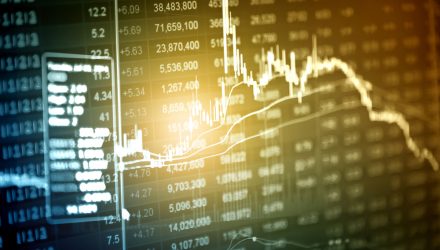As the world attempts to decarbonize, some experts believe that a repricing of renewable energy and clean technology assets will materialize.
Over the long term, that repricing could benefit a variety of exchange traded funds, including the newly minted Goldman Sachs Bloomberg Clean Energy Equity ETF (GCLN). With the decarbonization transition continually gaining momentum, GCLN could be a prime example of a well-timed new ETF.
“Our new analysis shows the repricing effect is real and growing, as it was negligible in the period 2016-2019,” according to BlackRock research. “We believe the repricing has much more room to run, based on factors such as investor preferences for greener assets and historical changes in risk premia for similar long-run transitions such as demographics.”
GCLN, which debuted last week, tracks the Bloomberg Goldman Sachs Global Clean Energy Index. The rookie ETF offers a fresh approach to renewable energy investing because it features exposure to both “brown” companies that are enhancing their renewable footprints and companies that provide services and technologies that are directly relevant to decarbonization efforts and expanded adoption of renewable sources.
The diverse strategy employed by GCLN includes a multi-sector approach that features exposure to 185 stocks, which is a deep bench compared to some legacy funds in this category. Those traits could benefit investors over the long haul as more capital flows away from fossil fuels to renewable projects.
“The rewiring will involve a massive re-allocation of resources, in our view, and transform the macro environment. There will be periods when traditional energy can benefit from mismatches in supply and demand. The root cause is that transition of the energy sector has so far been lopsided, we believe, with extra investment in renewables failing to keep pace with reduced capex in fossil fuels,” adds BlackRock.
Perhaps surprisingly, GCLN allocates 40.6% of its weight to the utilities sector, but that’s an important factor because many utilities companies are transitioning to renewables, shedding their “brown” status to bolster renewable energy credentials.
Additionally, GCLN devotes 46.7% of its weight to industrial and technology stocks, indicating that the fund is tethered to the rapid expansion of decarbonization expenditures.
“We see the transition driving a relative return advantage for greener sectors such as tech and healthcare over browner sectors such as energy for years to come, all else equal. There will be periods when browner assets outperform, and we see investment opportunities in low-cost oil and gas producers leading decarbonization within their sectors,” concludes BlackRock.
For more news, information, and strategy, visit the Future ETFs Channel.
The opinions and forecasts expressed herein are solely those of Tom Lydon, and may not actually come to pass. Information on this site should not be used or construed as an offer to sell, a solicitation of an offer to buy, or a recommendation for any product.

